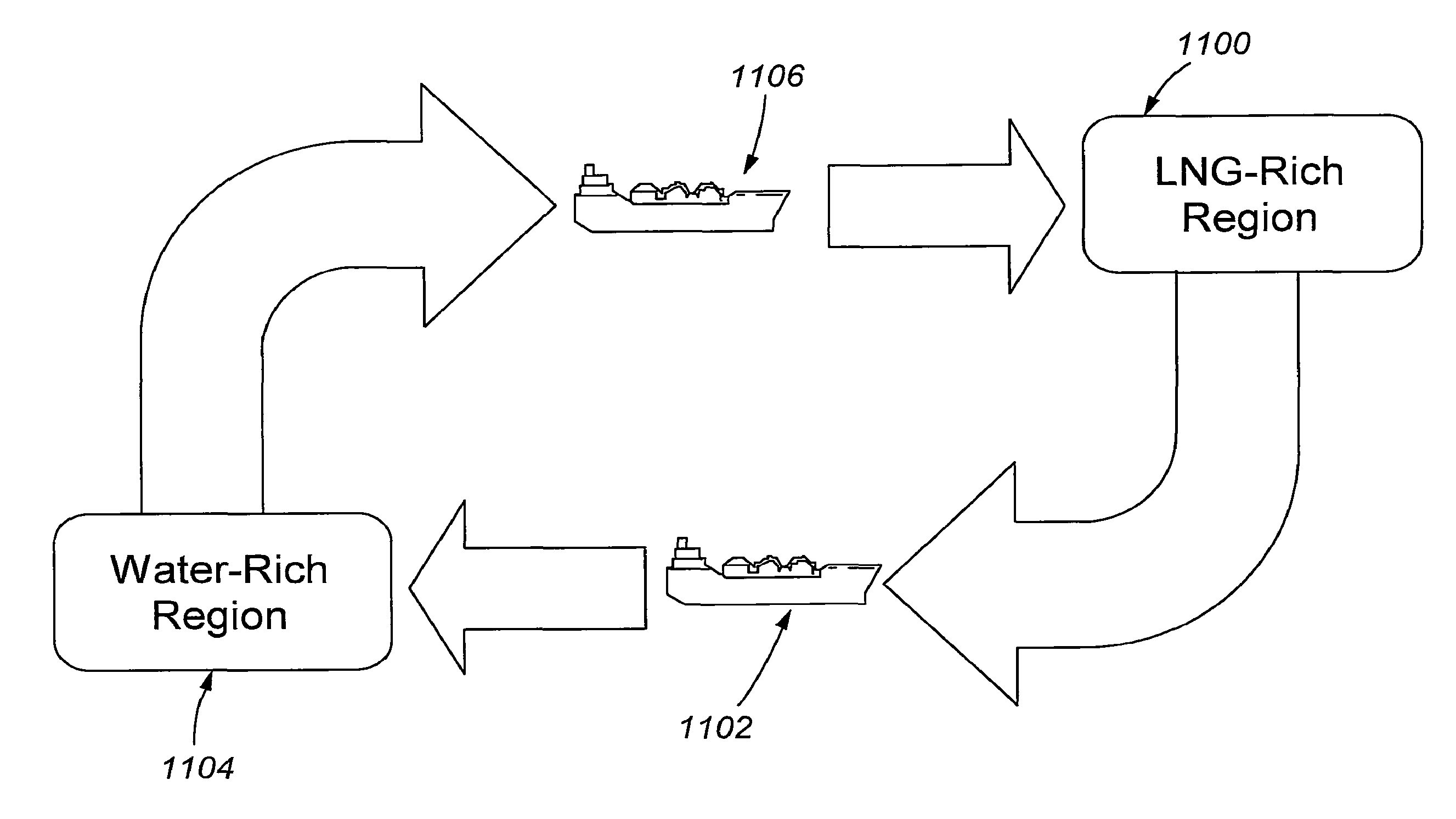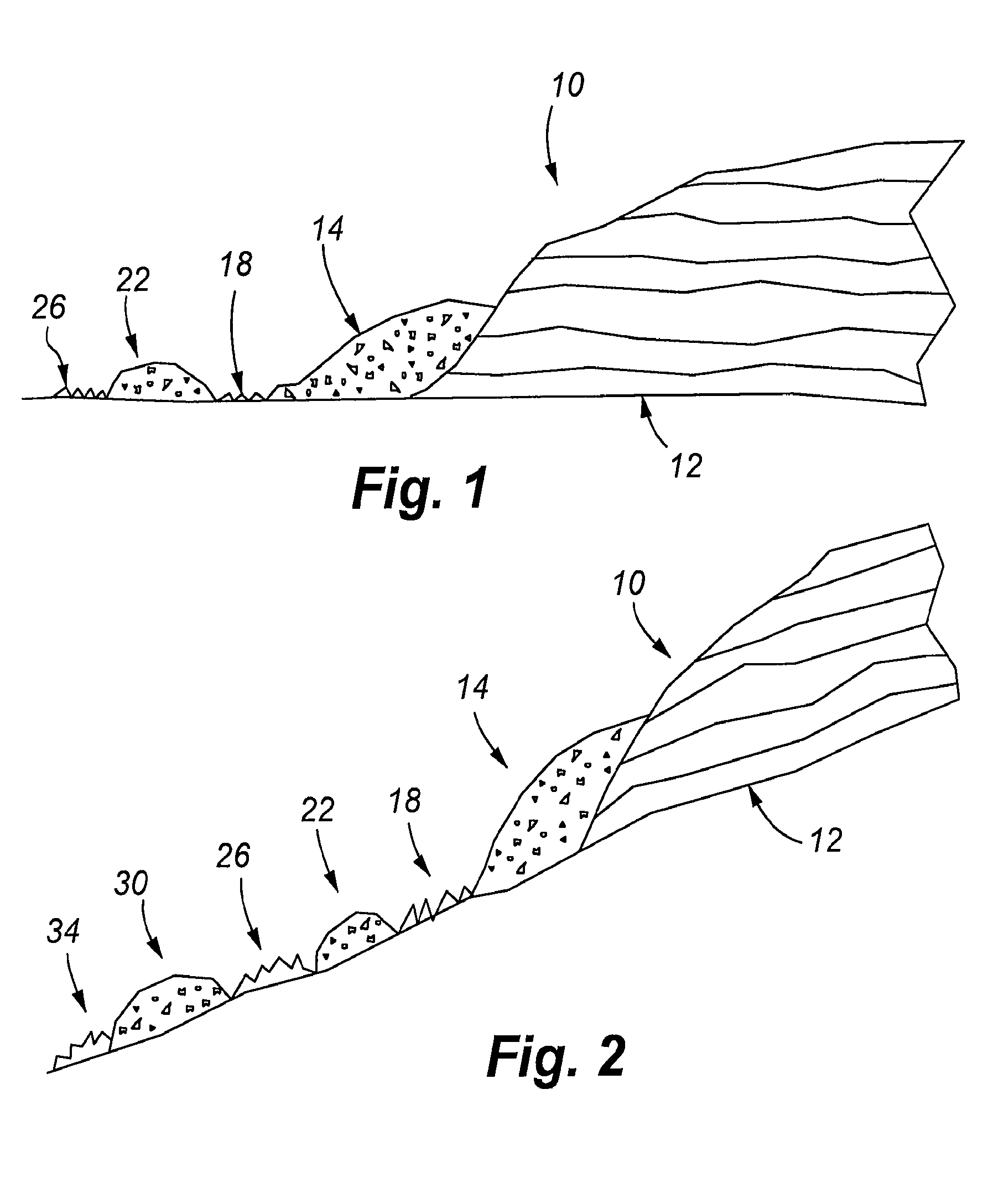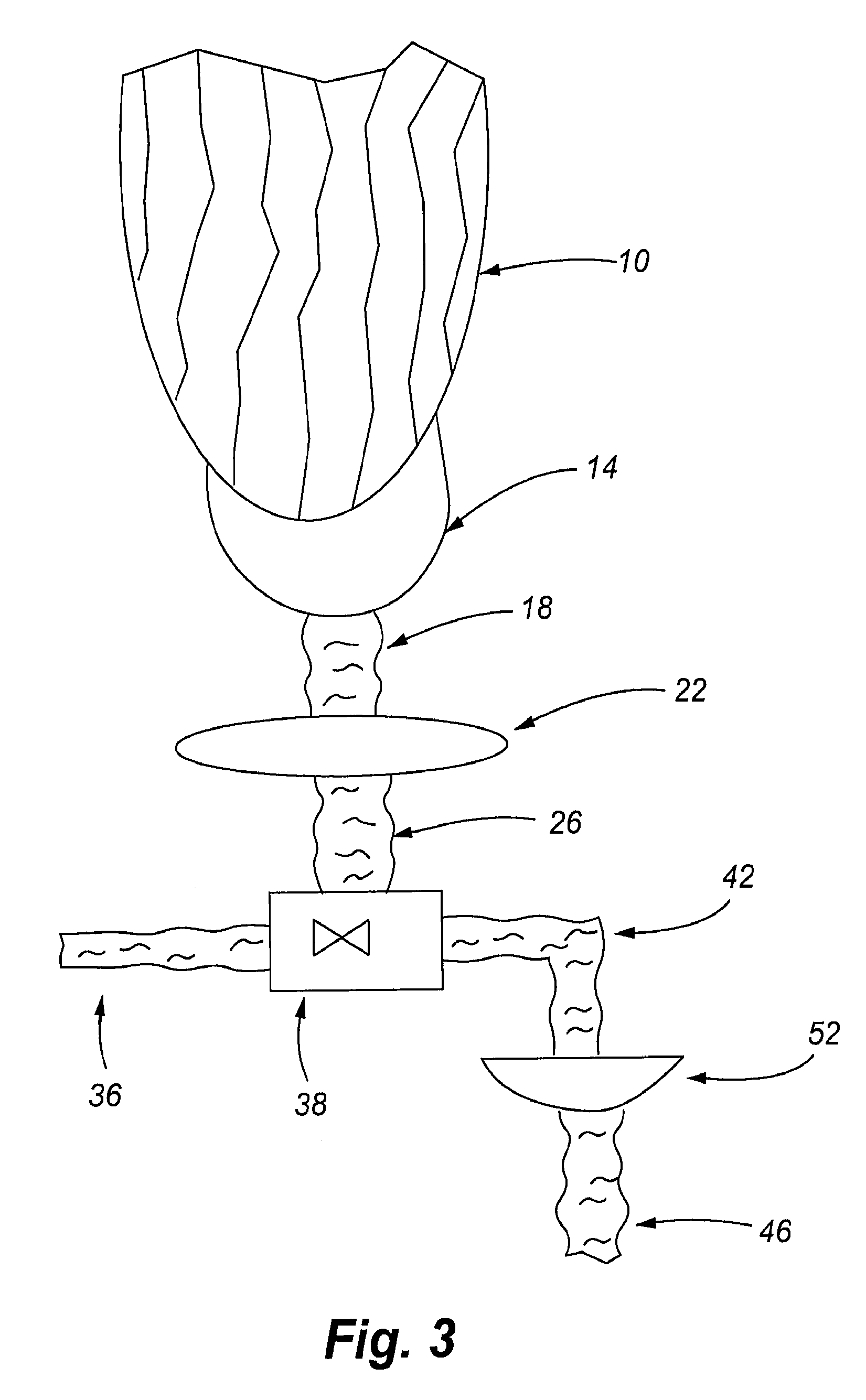Method and system for processing glacial water
a technology of glacial water and processing method, applied in data processing applications, energy-based wastewater treatment, ship accessories, etc., can solve the problems of unquenchable demand, increasing demand and hence more expensive, and increasing buoyancy, so as to achieve further control of buoyancy and preserve water integrity
- Summary
- Abstract
- Description
- Claims
- Application Information
AI Technical Summary
Benefits of technology
Problems solved by technology
Method used
Image
Examples
Embodiment Construction
[0120]FIG. 1 is a plan view of glacial ice and melt water [12] as it is subjected to colloidal clay filtering. One aspect of the present invention is that the source water [10] is of a high degree of purity at the beginning of the process. With respect to the present invention, a high degree of purity refers to an ice or water source that is substantially free of harmful contaminants. While it will be recognized that certain contaminants may be more or less harmful to different individuals, substantially free of harmful contaminants with the respect to the present invention means that the source contains such a low level of contaminants as to not cause illness or harm to an adult human when up to 64 fluid ounces are consumed on a daily basis. By selecting a water source of sufficient initial purity, natural and organic filtering can be applied to produce high quality potable water without the use of sterilization chemicals or energy intensive filtration means. It is known that soil ...
PUM
 Login to View More
Login to View More Abstract
Description
Claims
Application Information
 Login to View More
Login to View More - R&D
- Intellectual Property
- Life Sciences
- Materials
- Tech Scout
- Unparalleled Data Quality
- Higher Quality Content
- 60% Fewer Hallucinations
Browse by: Latest US Patents, China's latest patents, Technical Efficacy Thesaurus, Application Domain, Technology Topic, Popular Technical Reports.
© 2025 PatSnap. All rights reserved.Legal|Privacy policy|Modern Slavery Act Transparency Statement|Sitemap|About US| Contact US: help@patsnap.com



